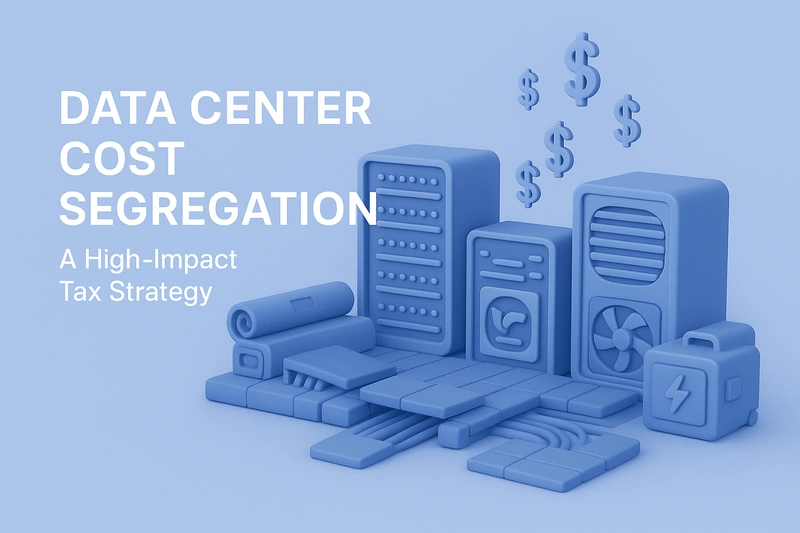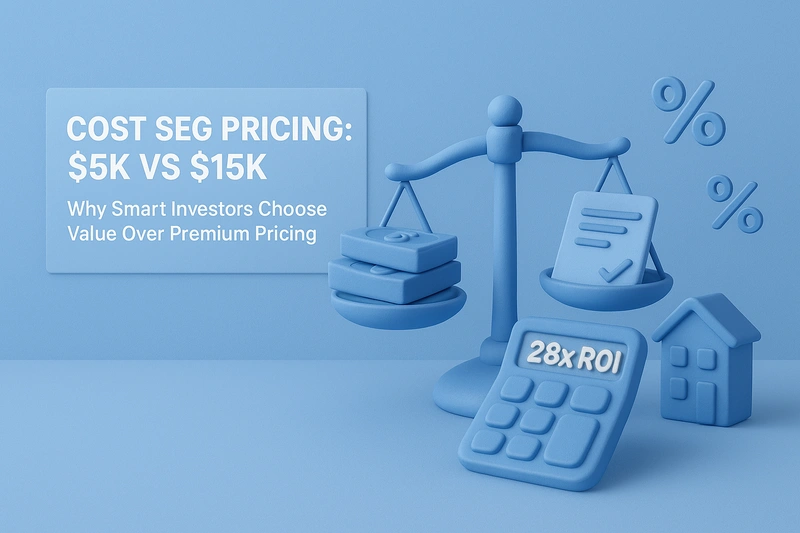A few years ago, I advised a private equity group that had just completed a $25 million build-out of a Tier III colocation data center. The facility was state-of-the-art: dual 2,000-kW generators, N+1 cooling redundancy, a raised floor system spanning 25,000 square feet, and a sophisticated security and monitoring network. On paper, these were simply capital expenditures to be depreciated over nearly four decades.
But a detailed cost segregation study told a very different story. More than 35% of the project’s costs were reclassified into 5-, 7-, and 15-year property. That meant millions of dollars in accelerated depreciation deductions, most of it front-loaded into year one thanks to bonus depreciation rules. The result: over $8 million in tax savings, freeing up cash flow to fund the client’s expansion into a second facility.
That’s the power of cost segregation for data centers. It transforms highly specialized infrastructure into immediate financial leverage.
Data Centers as a Tax-Optimized Asset Class
Unlike standard commercial properties, data centers are packed with components that qualify for shorter depreciation schedules. Instead of waiting 39 years to recover costs, owners can accelerate deductions across 5-, 7-, or 15-year property classes.
These include:
- Power and backup systems
- Precision HVAC and CRAC/CRAH units
- Raised access flooring and specialized cabling
- Security, fire suppression, and lighting systems
- Site improvements like paving, drainage, and fencing
By identifying and reclassifying these assets, a cost segregation study transforms long-term depreciation into immediate financial leverage.
The Scale of Potential Tax Savings
The financial impact of cost segregation on data centers is not theoretical; it’s measurable. On average, 20-40% of a data center’s total build or acquisition cost can be reclassified into shorter asset lives. That percentage translates into millions in accelerated deductions.
Consider a $50 million facility:
- $15-20 million of those costs may qualify as 5-, 7-, or 15-year property.
- With 100% bonus depreciation now reinstated, the entire amount of those short-life assets can potentially be deducted in the first year.
- That equates to an immediate $10-15 million tax deduction in year one alone.
Even at a smaller scale, the results are meaningful. A $10 million regional data center might reclassify $3 million in assets, producing more than $1.5 million in accelerated first-year depreciation.
For investors and operators, those numbers directly translate into liquidity: more capital for new equipment, additional build-outs, or debt reduction. Instead of being locked into a 39-year straight-line schedule, owners are able to recapture a significant portion of their investment almost immediately.
The Process Behind a Defensible Study
A cost segregation study that can withstand IRS scrutiny is built on engineering, documentation, and tax compliance — not estimates or shortcuts. The most reliable studies follow a rigorous process:
- Engineering analysis of the facility — Reviewing architectural drawings, mechanical and electrical plans, and construction invoices to identify each component of the build. For a data center, this means isolating systems like CRAC units, raised floors, power distribution, and generators from the structural shell.
- Site verification — Conducting a physical inspection to confirm that the systems identified on paper match what is installed. This step is critical for specialized infrastructure where classification depends on actual use.
- Detailed cost breakdown — Allocating project costs down to individual systems and materials, often by using contractor payment applications, vendor invoices, and change orders. The allocation must tie back to the total construction or acquisition cost with precision.
- Asset classification — Assigning each item to the correct tax life (5, 7, 15, or 39 years) based on IRS guidelines. For example, a generator serving only IT equipment may qualify as 7-year property, while the building shell remains at 39 years.
- Deliverable report — Producing a final study that includes methodology, calculations, photographic documentation, and legal references. This becomes the defensible record in the event of an IRS audit.
The difference between a defensible study and a risky one is often the depth of engineering involvement. A high-quality report doesn’t just provide numbers; it demonstrates exactly how those numbers were derived, ensuring both maximum benefit and audit protection.
Avoiding Pitfalls and Managing Risk
The IRS has long scrutinized cost segregation studies, particularly on high-value facilities like data centers, where the dollar stakes are enormous. Missteps don’t just reduce savings; they can trigger audits, penalties, or forced reclassifications. The most common pitfalls include:
- Overly aggressive classifications — Treating structural components (e.g., load-bearing walls, roofs, or core HVAC systems) as short-life property. These misclassifications are the first targets in an IRS audit.
- Insufficient documentation — Relying on percentage estimates or “rules of thumb” rather than hard construction records, invoices, and engineering analysis. Weak documentation undermines defensibility.
- Ignoring recapture exposure — Accelerated depreciation provides front-loaded deductions, but if the property is sold, those deductions can trigger recapture at higher ordinary income tax rates. Poor planning can turn a short-term gain into a long-term liability.
- Lack of coordination with tax advisors — A study that isn’t integrated with a broader tax strategy may miss opportunities (like Section 179D energy deductions) or create unintended timing issues.
The way to mitigate these risks is to work with specialists who bring engineering, construction, and tax expertise together. A defensible study should be built to IRS standards, supported by a clear audit trail, and fully aligned with the owner’s overall tax strategy.
For data centers, where the distinction between specialized systems and the building shell can be subtle, the difference between a compliant study and a risky one is often measured in millions of dollars. This is why selecting the right partner is not just a matter of maximizing savings but also a safeguard against costly mistakes.
Turning Infrastructure Into Immediate Financial Leverage
Data centers are built to handle enormous power and connectivity demands. But behind the walls, every rack, duct, and conduit also represents a tax opportunity. By front-loading depreciation through cost segregation, owners convert what would have been decades of slow write-offs into immediate, usable savings.
If you’re evaluating how cost segregation for data centers can improve your financial outcomes, this is the time to act. Partnering with a specialist like R.E. Cost Seg ensures a rigorous, engineering-based study that unlocks accelerated depreciation while protecting compliance. Done right, it’s far more than tax savings: it’s financial strategy at its most effective.






